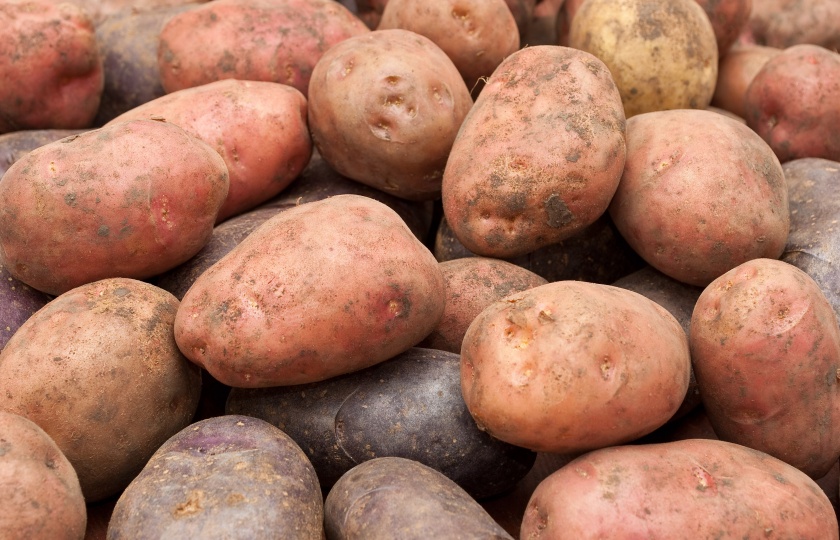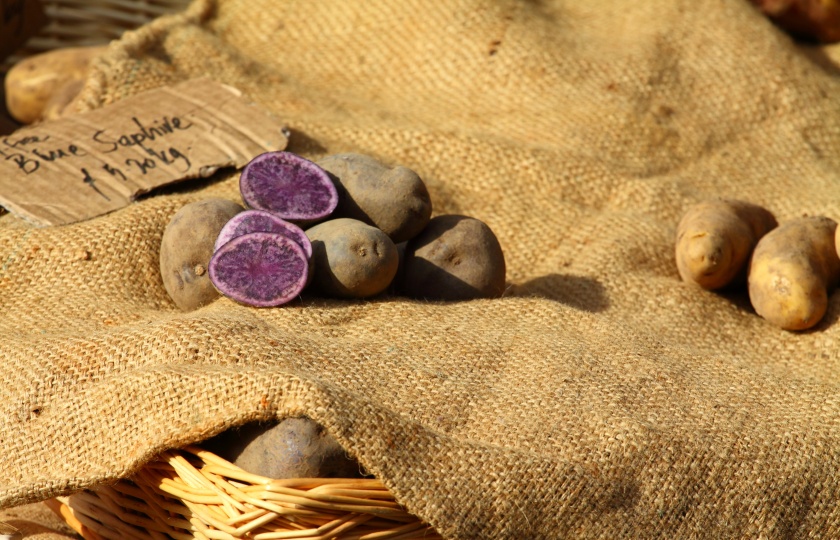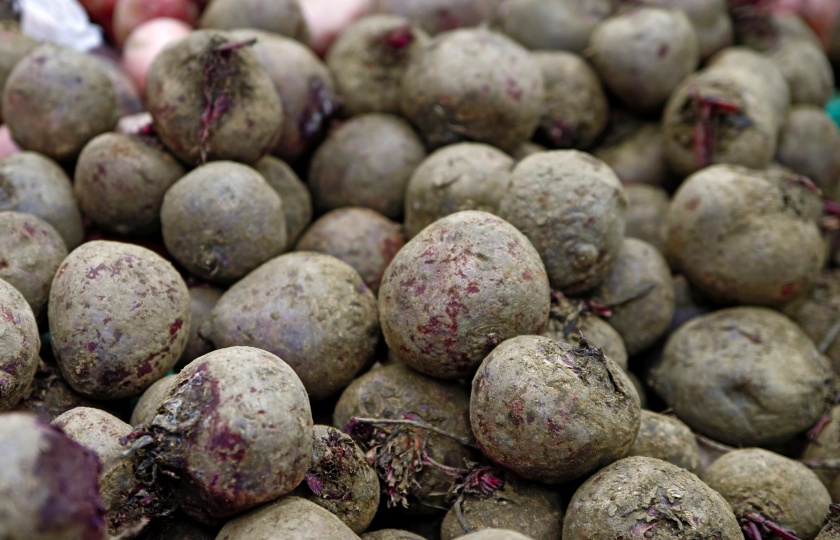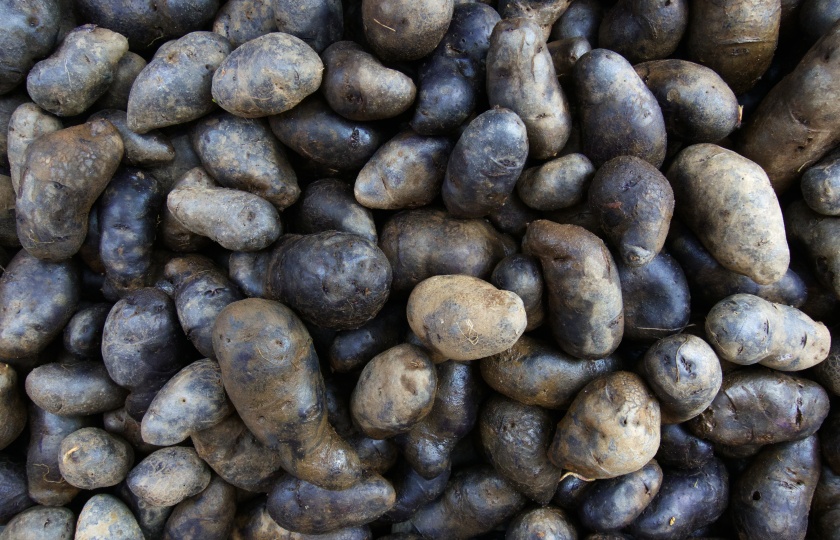Purple Potatoes vs Ube: Key Differences Explained

Purple potatoes and ube look similar, but they have distinct characteristics in terms of taste and uses. Want to know the differences between the two? Keep reading!
Appearance Differences
Purple Potatoes: The skin is typically purple, and the flesh is usually purple-white or light purple. When cut, you can see the purple inside, giving it a striking visual appeal.
Ube: Ube has a vibrant purple skin and deep purple flesh. It’s often more intense in color compared to purple potatoes, and the flesh has a smooth texture.
Taste Differences
Purple Potatoes: Purple potatoes have a flavor similar to regular potatoes, with a dense, slightly earthy taste and mild sweetness. They are versatile and work well as a savory dish.
Ube: Ube has a distinct sweet taste, often compared to vanilla or a sweet potato, and is naturally sweet. It is used in desserts and baked goods due to its sweet flavor profile.

Nutritional Differences
Purple Potatoes: Rich in dietary fiber and anthocyanins, purple potatoes have antioxidant properties. Their nutrients help support overall health, especially cardiovascular health.
Ube: Ube is also nutritious, containing fiber, vitamins, and minerals. It’s a good source of complex carbohydrates, vitamin C, and antioxidants, contributing to skin health and digestion.
Uses and Cooking Methods
Purple Potatoes: Ideal for roasting, boiling, mashing, and adding to salads. They work well in savory dishes, maintaining a firmer texture when cooked.
Ube: Primarily used in desserts, like ice cream, cakes, and pastries. It can be boiled, mashed, or pureed for sweeter dishes and often appears in Filipino delicacies like ube halaya.
Storage Differences
Purple Potatoes: Stored in a cool, dark, and dry place, like a pantry, to keep them fresh. They should not be kept in the refrigerator as cold temperatures can affect their texture.
Ube: Ube should be stored similarly, in a cool, dry, and well-ventilated space, away from direct sunlight. It’s often available fresh or in frozen form for easier storage.

How do the storage methods for purple potatoes and ube differ?
Storage Temperature Differences
Purple Potatoes: They are best stored at temperatures between 7-10°C (45-50°F). Keep them in a kitchen storage cabinet or a cool, dark place away from direct sunlight. This temperature range helps maintain their quality and flavor.
Ube: Ube prefers a warmer storage temperature of around 13-16°C (55-60°F). It is more sensitive to cold and can suffer from frost damage if stored in temperatures that are too low.
Humidity Sensitivity
Purple Potatoes: With thin skins, purple potatoes are quite sensitive to moisture. Excessive humidity can cause them to rot quickly, so it is important to store them in a dry environment.
Ube: Similar to purple potatoes, ube is also susceptible to mold and rot in high humidity. However, it can tolerate slightly higher humidity for a short period compared to purple potatoes. Long-term exposure to moisture will still cause spoilage.
Preferred Storage Locations
Purple Potatoes: These should be stored in a dry, cool, and well-ventilated area, such as a pantry or a dedicated storage cabinet. Avoid refrigerating them, as the cold temperature can cause them to harden and affect the texture.
Ube: Ube should also not be stored in the refrigerator, as it doesn’t handle cold well. Instead, keep it in a well-ventilated, cool, dark place, like a kitchen cabinet. If you have fresh ube, it’s best stored at room temperature or slightly cooler for a few days.

Can purple potatoes be substituted for ube?
Of course! Purple potatoes and ube look quite similar, but they do have slight differences in taste and texture. Purple potatoes are a bit sweeter and denser compared to ube.
However, they make a great substitute in desserts or other dishes. If you like the sweetness of purple potatoes, go ahead and use them – it’ll still turn out great!
How to cook purple potatoes for the best taste?
The best way is to make mashed purple potatoes! It's super easy and results in a smooth, creamy texture that preserves the flavor of purple potatoes.
Recipe for Mashed Purple Potatoes:
Boil the purple potatoes:
Wash the purple potatoes and cut them into small chunks. Put them in a pot, add water, and bring it to a boil. Cook until the potatoes become soft (around 20-25 minutes). You should be able to easily poke through them with a fork.
Peel (optional):
Remove the purple potatoes from the pot, let them cool slightly, and peel off the skin. If you prefer, you can leave the skin on for added texture.
Mash the potatoes:
Use a fork or a potato masher to mash the purple potatoes until smooth and creamy.
Season:
Add butter, salt, and black pepper, and stir well. For a smoother consistency, you can add a bit of milk or cream, adjusting to your preferred thickness.
Tips:
Seasoning: For extra flavor, try adding garlic powder, herbs, or a small spoon of yogurt. This will make the mashed purple potatoes even more flavorful and complex.
Pairing: These mashed purple potatoes go perfectly with roasted meats, stews, or even as a main dish on their own.























